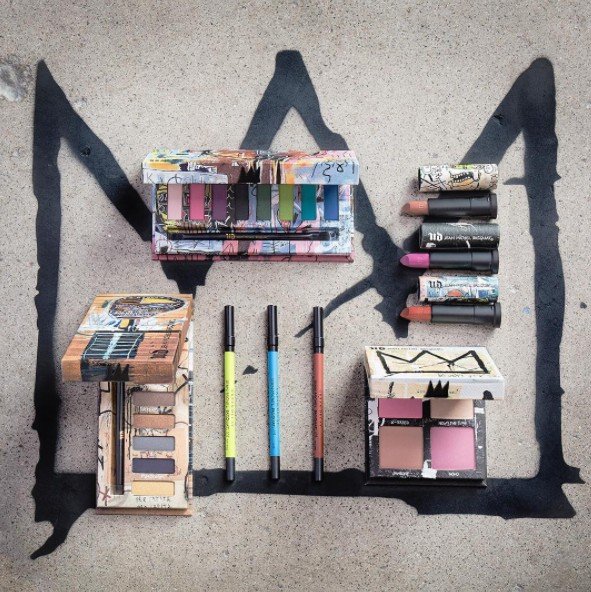The UD Basquiat Collection: Celebration or Commodification of an Artist's Legacy?
On April 20th, Urban Decay launched its new Basquiat collection, a makeup line inspired by the work of artist Jean-Michel Basquiat. The collection features special edition palettes, lipsticks, bags and brushes adorned with some of Basquiat’s most famous pieces and named with references to his life. While Urban Decay is one of my favorite brands, and I would usually be ecstatic at the release of a new Urban Decay collection, the announcement left an uncomfortable feeling in my stomach. I couldn’t help but wonder, by turning Basquiat’s art into a way to market makeup, are we trivializing his artwork and commodifying his legacy?
Gold Groit by Jean Michel Basquiat, featured on Urban Decay's Gold Groit Palette. Image via
My discomfort with this collaboration doesn’t come from the fact that Urban Decay is using the art of a deceased artist to sell their makeup. Urban Decay has been working with the Basquiat estate for over three years, according to a UD spokesperson, and were given full license to use his artwork in this special edition line so long as some of the profits went to the estate. Rather, my discomfort comes from the subject of the artwork itself, and the fact that this collection seems to be stripping away the original intention of Basquiat’s works for monetary gain. Basquiat’s work is beautiful, yes, but many of his pieces focused on the social issues of his time. They're about poverty, class struggle, racism, xenophobia, and addiction. So it seems strange that while Basquiat used his work to express his struggle as a poor, Haitian and Puerto Rican black man, his art is being used to sell forty dollar palettes promoted by a white model (Ruby Rose).
Urban Decay's Jean-Michel Basquiat Collection. Image via.
On the other hand, Urban Decay isn’t completely ignoring the implications of Basquiat’s work. Many of their promotions for the new Basquiat line feature the quote, “From his informal graffiti work and the way he mixed mediums and colors to the way he spoke out against social injustice, it's hard to imagine a more perfect fit for our brand.” And as I mentioned before, they have worked closely with the Basquiat estate, and many have praised the brand for giving new exposure to Basquiat's art for a younger generation. But by doing so, is Urban Decay controlling the narrative surrounding Basquiat's work for those who had never heard of him before? While the brand praises Basquiat for being "an outsider who changed the status quo" and mentions that he "spoke out against social injustice", their website gives no other mention of the specific ways he challenged social injustice, and his bio on their website gives no mention of his social justice work.
Urban Decay is hardly the first brand to use Basquiat's work to sell their product, and I doubt they'll be the last. And relatively speaking, they've been respectful in much of their collaboration, working with the estate and giving them some of the profits. But as much as I love Urban Decay and Basquiat's work, I feel like this collection undermines much of what Basquiat's art strives to portray, and turns it into eye-catching, vibrant packaging that pops on Sephora's shelves.
To learn more about the life and art of Jean-Michel Basquiat, click here.
Featured Image via.








